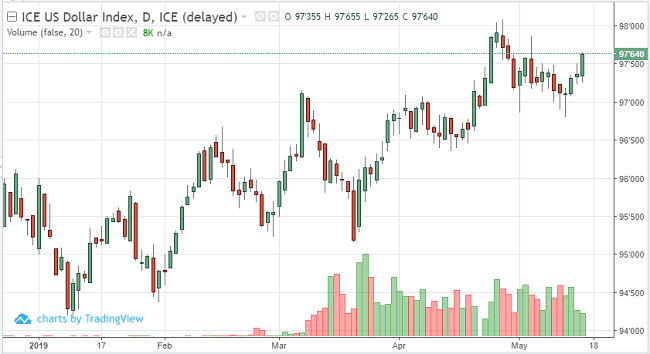
The US dollar has quickly rebounded from Monday’s low as trade tensions fall into the background. This is a bit surprising, as Wednesday’s retail sales and industrial production numbers missed expectations. Weak data in the recent term further diminishes the chances of a rate hike by the Fed going forward, which is bearish for the dollar into the second half of the year. Thursday’s extended range up can be credited to lower-than-expected jobless claims and an increase in housing starts and permits. I believe this is merely short-term strength and the USD is in a topping process. Currency investors are flocking to the safety of the Japanese yen, as it is now in a bull trend vs the dollar. Thursday morning, the yen is trading around initial support at 91.34, and a breach under this level could cause back and fill action toward 91.24. A break above 91.905 could cause an extended run toward 92.26. The euro continues its march south despite news that the US will delay tariffs on European autos. Scheduled data out of the EU has been mixed this week, with German GDP slowing and the Italian CPI reading reflecting lukewarm inflation. Meanwhile, France is observing decade-low levels of unemployment. The euro will likely be more sensitive to changes in risk sentiment than other currencies. Thursday morning, the June pound sank to its lowest levels since January. Brexit concerns have sparked selling interest as British political parties fight for control going into next year. Near-term resistance is seen at 1.280, while a close over 1.2985 will likely stop the bear in its tracks.
U.S. Dollar Jun ’19 Daily Chart



